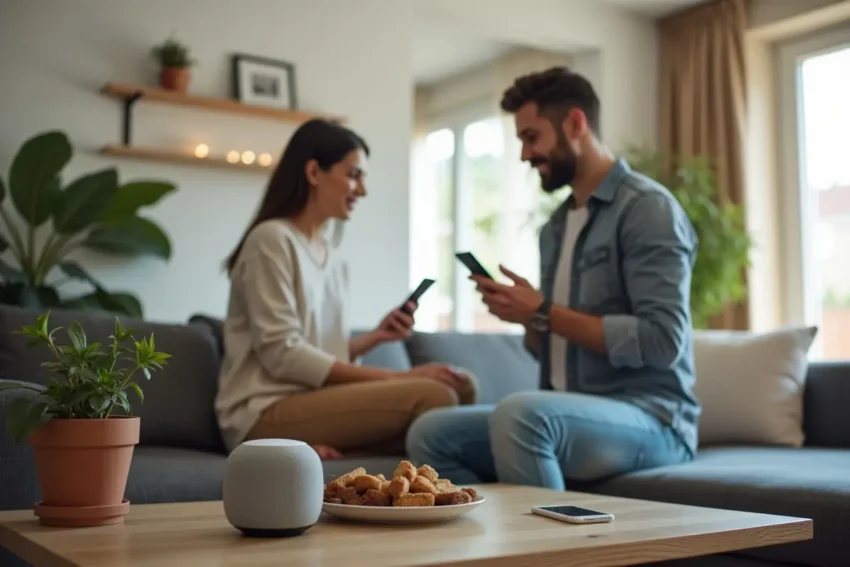How Smart Home Technology Is Transforming Everyday Living

The modern home is experiencing a quiet revolution. What was once a static collection of rooms has evolved into an intelligent, responsive environment that anticipates and adapts to our daily rhythms. Smart home technology has become the driving force behind this transformation, delivering unprecedented levels of convenience, efficiency, and security to households around the globe.
Whether it’s climate systems that learn your schedule or a robot vacuum cleaner that keeps floors spotless while you’re away, today’s connected devices are weaving themselves into the fabric of our daily lives and redefining what home truly means.
Contents
The Evolution of Smart Home Technology
The path to intelligent homes started modestly with programmable thermostats and simple timers. But the real breakthrough came when artificial intelligence, Internet of Things (IoT) connectivity, and advanced wireless protocols converged into something greater than the sum of their parts. Today’s smart home systems don’t just follow commands—they learn. They observe your habits, recognize patterns, and craft personalized experiences that get better with time.
The arrival of universal standards like Matter has been a game-changer, breaking down the walls between different manufacturers and allowing devices to speak the same language. This technological foundation empowers homeowners to build truly integrated ecosystems where lighting, security, entertainment, and appliances work in concert, all orchestrated through unified interfaces and intelligent routines.
Core Benefits of a Connected Home
Enhanced Convenience and Daily Efficiency
Automation has liberated us from the tyranny of routine household tasks, streamlining our days in ways we never imagined possible. Picture this: your smart home orchestrates an entire evening routine as you head home from work. The thermostat warms the house, pathway lights guide you to the door, and security systems quietly confirm your arrival—all without lifting a finger.
But the real magic happens in the details. Coffee brewing at exactly 6:30 AM. Appliances running during cheaper off-peak hours. Lights that gradually dim as bedtime approaches. These small automations add up to significant time savings and mental relief.
Key Takeaway: The greatest convenience lies not in any single feature, but in how automation reduces the cognitive burden of managing a household while seamlessly coordinating multiple systems to work as one.
Improved Energy Management and Sustainability
Smart homes have turned energy efficiency into an art form. Advanced thermostats don’t just maintain temperature—they study your comings and goings, learning when to scale back heating or cooling without sacrificing comfort. Smart lighting systems have similar intuition, automatically adjusting brightness or switching off in empty rooms.
The real sophistication comes from AI-powered analytics that examine energy consumption patterns across your entire home. These systems spot inefficiencies you’d never notice and suggest adjustments that can meaningfully impact your utility bills.
Beyond personal savings, these technologies contribute to broader environmental goals. Smart water heaters learn your family’s usage patterns and heat water only when needed. Intelligent irrigation systems check weather forecasts and soil conditions before watering your garden, eliminating waste while keeping plants healthy.
Health, Safety, and Security Innovations
Today’s smart homes have become vigilant guardians of our well-being. Air quality sensors work around the clock, monitoring for pollutants and allergens, then automatically activating purification systems when the air needs cleaning. Meanwhile, AI-powered security cameras have learned to distinguish between your teenager sneaking in late and an actual intruder, sending appropriate alerts accordingly.
Smart locks offer the perfect blend of security and convenience, providing keyless entry while maintaining detailed records of who comes and goes. Perhaps most impressively, emergency response systems can detect concerning patterns—like falls or prolonged inactivity—and automatically reach out to emergency services, making homes significantly safer for elderly residents or anyone with health concerns.
Overcoming Challenges in Smart Home Adoption
Device Interoperability and Standardization
For years, getting smart devices from different manufacturers to play nicely together felt like trying to conduct an orchestra where every musician spoke a different language. The Matter protocol has largely solved this puzzle by establishing a universal communication standard that transcends brand boundaries. Now homeowners can focus on choosing the best devices for their needs rather than worrying about whether everything will work together.
By integrating solutions like the weBoost 200 signal booster, users can further enhance connectivity across their smart home ecosystem without dealing with compatibility headaches. This added layer of signal stability ensures that every Matter-enabled device communicates reliably, even in areas with traditionally weak coverage.
Privacy and Data Security Concerns
Connected devices inevitably gather personal information, and that reality deserves careful consideration. Protecting your smart home network requires a proactive approach to security:
- Create strong, unique passwords for every device and account
- Keep security updates current across all connected devices
- Set up network segmentation to isolate smart home devices from other systems
- Regularly audit and adjust privacy settings on all platforms
- Invest in devices from manufacturers with proven security track records
The Future of Smart Homes: What to Expect
The next wave of smart home innovation will center on predictive AI systems that anticipate your needs before you even recognize them yourself. These advanced systems will read subtle behavioral cues and environmental changes to proactively adjust settings, reorder household supplies, or suggest optimizations you hadn’t considered.
Inclusive design is also driving exciting developments in smart home technology that support aging in place and accessibility for users with diverse abilities. Voice controls, automated mobility assistance, and comprehensive health monitoring systems are making it possible for more people to live independently and comfortably in their own homes for longer.
The Lasting Impact of Smart Home Technology
Smart home technology represents far more than a collection of clever gadgets—it’s fundamentally changing our relationship with the spaces we call home. By handling routine tasks, optimizing resource consumption, and enhancing safety and security, these systems create environments that aren’t just more efficient, but genuinely more livable and sustainable.
As this technology continues to mature, homeowners have remarkable opportunities to craft living spaces that truly respond to their unique needs and preferences. The key to success lies in thoughtful integration—embracing innovations that add genuine value while maintaining vigilance around privacy, security, and practical utility rather than complexity for its own sake.



